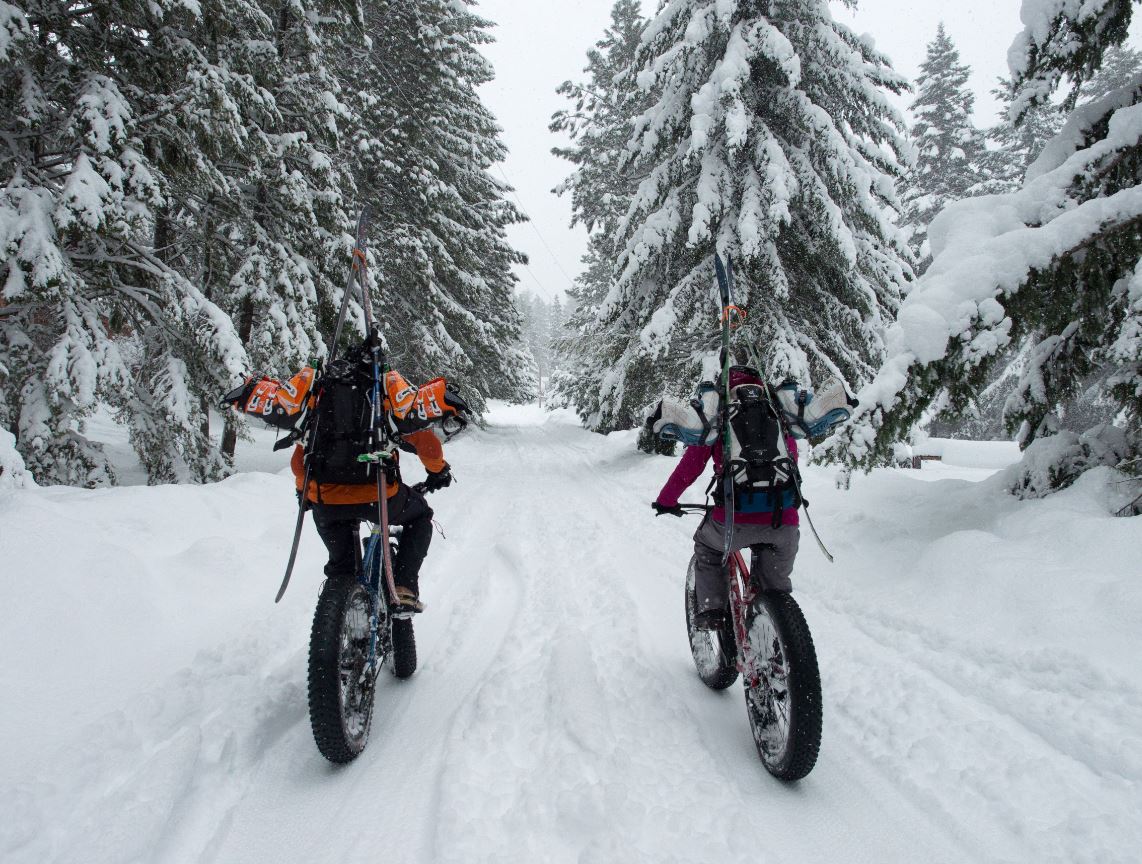Steps to keep your bike primed in the off-season.

It’s winter, and you’re suited up like Jacques Cousteau and ready to go for a winter bike ride. But before you plunge into hell (remember, the center of Dante’s Inferno was ice, not flame), you should get your bike ready to face the elements, too. And when it’s finally spring again, thank your bike for sticking with you through sleet, ice, salt and snow by giving it fresh cables, a chain, and bar tape.
INSTALL FENDERS
What’s protected: Fenders keep snow and other nasty winter stuff off everything on your bike except the wheels and will keep you clean—except your feet. Plus: They add Euro flair.
Where fenders won’t go: Because most fenders won’t fit on bikes with dual-pivot brakes, use clip-on fenders. These fenders can be manipulated to fit the bike better than standard fenders.
Homemade option: You can make a down-tube fender for the front by cutting a plastic 2-liter bottle in half lengthwise and mounting it with zip-ties.
THWART RUST
Keep rust off steel: Temperature changes can cause condensation to form inside the tubes. When you get home from a winter bike ride, remove the seatpost and hang the bike upside down to let any moisture drain. Never bring a cold bike into a warm place unless it’s totally dry.
WRAP SEALS
Ready-made coverings: In the winter, ice sticks to your bike, then melts and the water seeps into bearings, which causes rust—even as soon as overnight. Let the rust get bad enough, and you’ll have to replace a whole headset or hub. And sealed cable systems help keep your bike shifting and braking well in nasty conditions. You can purchase a ready-made cover for your headset, suspension parts and seatpost, or you can DIY:
4 homemade protective covers:
Headset: A piece of an old tube can be used for the headset, but you’ll have to remove the fork to slip it over.
Hubs: Small pieces of pipe cleaner can be wrapped around the ends of axles to protect unsealed hubs.
Helmet: A plastic grocery bag placed over your helmet will keep rain from getting through the vent holes.
Saddle: Some saddles have Lycra or Kevlar panels that can stay wet for days. When that plastic bag isn’t on your helmet, use it to cover your seat so you’ll have a dry place to sit on your next ride.
RUN WIDER TIRES, LESS PRESSURE
Prevent snowy skids: Change to a wider tire and drop your tire pressure 10-20 psi for more traction. If you have 26-inch wheels you may want to go with tire chains or studded tires.
Studded tires are designed for ice only. The studs act like high-heeled shoes: The sharp points are great for sticking into the ice but just sink into snow. On a road, they’ll bite into the pavement, which will tear up the studs. Off-road, they could tear up a trail. Shred easy.
Road tires: For 700c wheels, look for a tire designed for more traction in wet, sticky stuff.
SOFTEN SUSPENSION
Cold weather can make suspension forks that use elastomers feel stiffer. Switching to the next softest level can help maintain consistent travel for winter. Most new forks don’t use elastomers. The only ways to tell if your fork does: Check the owner’s manual or open that baby up and look inside the fork leg.
Forks with oil: It has to be extremely cold to affect fork oil. You’ll freeze before the oil will. Ride on.
CLEAN TWICE AS OFTEN
Wipe down your bike immediately when you get back from a winter bike ride. After a good hot shower and some soup, return to the bike. Remove all your winter seal coverings and give the bike a thorough wash. Then wax the frame with car wax to protect paint and make cleaning easier after your next ride.
Chain rule: If you clean your chain once a month during the rest of the year, clean it at least once a week during winter riding. If you clean it once a week, clean it after every other ride.
More rim wear: Sand and ice will stick to your rims and cause poor brake performance and faster pad and rim wear. Unless you consider braking optional, brush off the rims and pads after every ride and pick grit out of the pads.
Move water, add lube: Once clean, use a spray lube to displace water in hard-to-reach places, such as the cable guides. Lube all pivot points, chain and cables with a wet-conditions lube.
BUY LIGHTS
Why you need lights now: There are fewer sunny days in the winter and visibility is worse when it’s raining or snowing. Check out our light offerings here.





